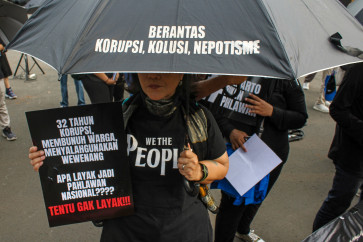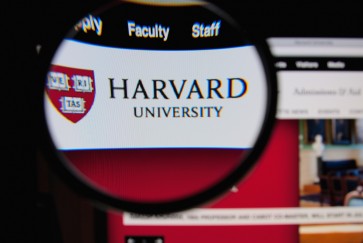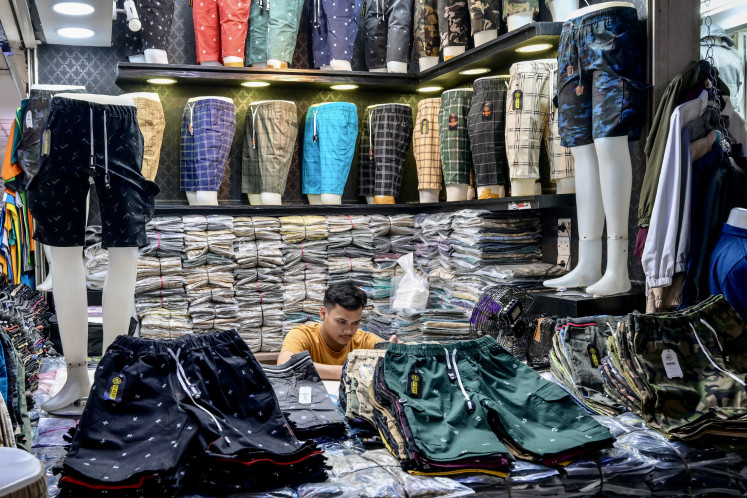Unlocking the potential in Singapore's cruise industry
When pundits at a cruise industry conference last month hailed the region as the next frontier for growth, hardly an eyelid batted in the audience
Change text size
Gift Premium Articles
to Anyone

W
hen pundits at a cruise industry conference last month hailed the region as the next frontier for growth, hardly an eyelid batted in the audience.
The general sentiment: Yes, there is potential. But how do you harness it?
Asean was earmarked as a cruise haven as far back as 1991, when then Senior Minister of State (Trade and Industry) Lim Boon Heng held it up as a potential second year-round cruise destination after the Caribbean. That same year, the first international cruise ship - the Royal Odyssey - dropped anchor at the newly opened Singapore Cruise Centre (SCC) at HarbourFront.
The region's cruising potential has since been cited so often that it is starting to sound like a broken record.
A look at numbers
The number of cruise passengers visiting Singapore has been growing annually at an average rate of 6.5 per cent over the past decade, hitting 913,000 last year. A closer look, however, shows this growth has not been uniform. The figures peaked at 1,139,000 in 2009 and have been falling steadily since.
The Singapore Tourism Board puts the drop down to the demise of several gaming ships after the two integrated resorts opened here in 2010. These cruise-to-nowhere ships - arguably a different market - used to make year-round calls at the cruise terminal, propping up the numbers.
But the number of ship calls has not recovered. There were only 332 last year, down from 926 in 2009.
The demise of year-round cruise ships, save for the SuperStar Virgo at the SCC, and the inability to attract new ones, have stymied growth and rendered the trade largely seasonal. The peak season is from October to March, when liners sail from the Northern Hemisphere during winter months.
As a result, berths here - especially those at Marina Bay Cruise Centre Singapore (MBCCS) - are underutilised in non-peak months. Bottleneck issues - such as a lack of cabs and lengthy waits at immigration checkpoints - arise during peak periods.
Simultaneously, terminal operators grapple with the question: How much manpower and infrastructure should one invest in if the terminal is busy only for a few months of the year?
The ultimate goal, of course, is to become a year-round cruise hub.
No source market
Industry players point to Singapore's lack of a source market as a big disadvantage. The country's domestic market, unlike nations such as the United States and China, is simply too small to fill ships all year round, they say.
Singapore has to extend its reach and lure cruise travellers from the region - Indonesia, Malaysia, Thailand and Vietnam.
Bob Guy, managing director of cruise specialist Destination Asia, said: "Don't think of country boundaries, think of Singapore as part of a larger whole. How would you draw tourists here to take a cruise? You have to help them connect the dots."
Coming here to cruise should be made as seamless for travellers as possible.
Partly due to a dearth of specialised travel agents, most travellers are left to book their own flights, transfers, cruise itineraries and hotel rooms - a logistical challenge.
Once here, navigating from flight to hotel to ship can be tedious, especially when it involves heavy luggage.
Cruise passengers should be able to check into an airport, in say, Indonesia, and have their bags transferred right to their ship or hotel. They should also be issued cruise boarding passes at airports and be able to check in for flights at cruise terminals.
Transfer from cruise terminal to the airport and back must be seamless. Currently, the easiest way out of MBCCS is by taxi - with an average wait of 15 minutes for one. There is no shuttle bus service to the airport.
A white paper released by the Asia Cruise Association (ACA) last month described the region as having "few cruise specialists". Seasonal deployment patterns and numerous visa applications make cruise products complex to retailers.
It also pointed out that Asians typically view cruising as transport rather than an experience and associate it with boredom and low activity levels - perceptions that need to change.
Asians prefer shorter cruises
In Western markets, seven- to 10-day cruise packages are popular, especially where attractive destinations are close to one another like in the Caribbean.
In Asia, where longer vacations are reserved for getaways to locations like Europe, a week-long cruise is too long for most, said Michael Chiam, a senior lecturer in tourism at Ngee Ann Polytechnic. ACA's paper shows that the preferred length for the Asian traveller is three to four nights.
Add this to the long inter-port distances between major cities and it means limited cruise itineraries, added Chiam.
From Singapore, most liners offer similar destinations like Port Klang, Penang and Phuket due to limited options in a two- to four-night duration. Sailing from Singapore to Hong Kong takes three days and 14 hours. Singapore to Ho Chi Minh City takes a day and three hours.
The good news is that Indonesia is planning to open up a range of new destinations in the years ahead, and Malaysia is planning a new terminal in Malacca.
Some governments have met to discuss the potential of cruising, but partnerships can also be formed with cruise line operators to invest in new destinations near major ports. Such operators have been known to invest in the development of ports in areas where they are active.
Exciting itineraries to exotic locations will lift demand, prompting cruise liners to deploy more year-round ships here.
Cruising as an experience
Cruise ship operators should also start tailoring vessels for the Asian traveller.
Currently, most cater to the Western market with spacious cocktail bars, Western cooking kitchens, souvenir shops, English signage and large open deck spaces for suntanning.
"Asians typically avoid the sun and prefer shopping for luxury goods at duty-free prices. They like karaoke and tend to care more about food quality," said ACA's general manager Kevin Leong, adding that many Asian travellers demand authentic Asian cuisine on board.
This means operators have to start investing in new kitchens, hire staff who speak appropriate languages, cook authentic cuisine, offer more shopping variety and build karaoke rooms.
The current lack of new regional destinations means ship quality is even more crucial.
Vessels deployed here need to themselves become destinations - drawing tourists into their bellies with unique offerings tailored to specific markets.
Unlocking potential
Asia is a largely untapped market. Cruise travellers now make up only 0.1 per cent of Asia's population, against 3.4 per cent in North America.
But Singapore could miss the boat if regional players - cruise operators, terminals, travel agents and government authorities - fail to unite to unlock the region's cruising potential.
In September, flight services firm Sats, which runs MBCCS, announced that it will be buying SCC from Temasek Holdings for S$110 million (US$88.5 million).
This could be a good first step forward. The merger will mean that one terminal is likely to direct a cruise liner to another during the peak season when berths are full, rather than turn it away.
Arguably, Sats, which provides airport gateway services and in-flight catering, will also have more incentive to connect its operations at the airport with both MBCCS and the SCC to improve transfer connections for all travellers.
The terminals, no longer worried about competition, can concentrate on what matters.
This means improving the experience for travellers, helping to market itineraries, and luring cruise liners to Singapore's shores.









